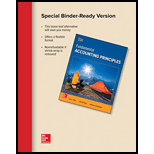
Introduction:
Ratio Analysis
• Ratio analysis is a study of several key metrics of a company based on the data presented in its’ financial statements with an objective to evaluate the financial health of a company.
• It is essential for investors, stakeholders, government bodies etc. to evaluate the key metrics of an entity in order to ensure that the company fulfills the going concern principle and displays financial stability.
The key metrics mentioned above include the following:
• Days’ sales uncollected – A measure of the total outstanding collections for credit sales in number of days.
• It is a measure used by companies to calculate their average collection period and understand how well accounts receivables are being managed.
•
• It seeks to measure the relation of the credit sales in proportion to the total turnover and is an indicator of how much of the receivables are blocked due to credit sales.
• Inventory turnover – A measure of the relation between the turnover and inventory measured in number of times.
• It seeks to measure the relation of the inventory rolled over in proportion to the total turnover and is an indicator of how much of the inventory is fast moving in relation to the total turnover.
• Days’ sales in inventory – A measure of the total outstanding collections for credit sales in terms of inventory.
• It is calculated to understand how many days the company holds inventory before selling it.
To Compute:
a) Days’ Sales Uncollected
b) Accounts Receivable turnover Ratio
c) Inventory Turnover Ratio
d) Days’ Sales in Inventory for the years 2016 and 2017 and comment on change in Ratios
Want to see the full answer?
Check out a sample textbook solution
Chapter 17 Solutions
Loose Leaf for Fundamental Accounting Principles
- On January 1, 2014, Wonder, Inc., reports net assets of $965,000, although equipment (with a four-year life) having a book value of $525,000 is worth $600,000, and an unrecorded patent is valued at $56,200. Halifax Corporation pays $910,000 on that date for an 85% ownership in Wonder. If the patent is to be written off over a 12-year period, at what amount should it be reported on consolidated statements at December 31, 2015?arrow_forwardHow much overhead is applied in work in process?arrow_forwardCalculate the sales volume variancearrow_forward
- Dunwell Industries produced 8,500 units during March. The standard quantity of material allowed per unit was 10 pounds at a standard cost of $3.60 per pound. If there was an unfavorable usage variance of $18,360 for March, what amount must be the actual quantity of materials used?arrow_forwardAccounting solutionarrow_forwardI need help with this general accounting question using the proper accounting approach.arrow_forward

 AccountingAccountingISBN:9781337272094Author:WARREN, Carl S., Reeve, James M., Duchac, Jonathan E.Publisher:Cengage Learning,
AccountingAccountingISBN:9781337272094Author:WARREN, Carl S., Reeve, James M., Duchac, Jonathan E.Publisher:Cengage Learning, Accounting Information SystemsAccountingISBN:9781337619202Author:Hall, James A.Publisher:Cengage Learning,
Accounting Information SystemsAccountingISBN:9781337619202Author:Hall, James A.Publisher:Cengage Learning, Horngren's Cost Accounting: A Managerial Emphasis...AccountingISBN:9780134475585Author:Srikant M. Datar, Madhav V. RajanPublisher:PEARSON
Horngren's Cost Accounting: A Managerial Emphasis...AccountingISBN:9780134475585Author:Srikant M. Datar, Madhav V. RajanPublisher:PEARSON Intermediate AccountingAccountingISBN:9781259722660Author:J. David Spiceland, Mark W. Nelson, Wayne M ThomasPublisher:McGraw-Hill Education
Intermediate AccountingAccountingISBN:9781259722660Author:J. David Spiceland, Mark W. Nelson, Wayne M ThomasPublisher:McGraw-Hill Education Financial and Managerial AccountingAccountingISBN:9781259726705Author:John J Wild, Ken W. Shaw, Barbara Chiappetta Fundamental Accounting PrinciplesPublisher:McGraw-Hill Education
Financial and Managerial AccountingAccountingISBN:9781259726705Author:John J Wild, Ken W. Shaw, Barbara Chiappetta Fundamental Accounting PrinciplesPublisher:McGraw-Hill Education





